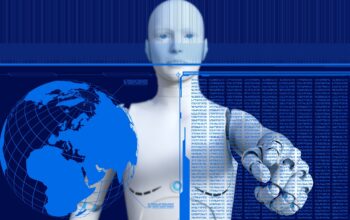In 2025, the world of design is exploding with creativity and innovation. From graphics to web design and even exterior design, trends are shifting towards more sustainable, interactive, and visually stunning experiences. Here’s a look at some of the most captivating trends that are making waves in the design community:
AI-Powered Design: Revolutionizing Creativity
Artificial Intelligence is no longer just a buzzword; it’s a powerful tool in graphic design. AI tools are being used to generate initial concepts, refine details, and even create intricate art. This technology is not replacing designers but rather enhancing their productivity and sparking new ideas. For instance, AI can help designers create personalized typography or generate complex patterns with ease, making the creative process more efficient and imaginative.
Bold Minimalism: Simple Yet Powerful
Bold minimalism is another trend that’s gaining traction. It involves using simple elements like strong color palettes and impactful typography to create memorable interactions. This trend is all about using minimalism to make a big statement. Brands are embracing bold minimalism to stand out and engage their audiences more effectively. For example, a company might use a bold font to highlight its brand message, keeping everything else simple and clean, which can be very effective in grabbing attention.
Sustainable Luggage: Eco-Conscious Travel
Design isn’t just about aesthetics; it’s also about sustainability. Companies like Samsonite are leading the way with eco-friendly luggage collections. The ESSENS™ Circular and PROXIS™ Circular lines use recycled polymers and bio-circular materials derived from used cooking oil. This innovative approach to product design is not only good for the environment but also reflects a broader shift towards sustainability in consumer choices. It shows that design can be both beautiful and environmentally responsible.
3D Elements in Web Design: Immersive Experiences
Web design is getting more immersive with the integration of 3D elements. This trend is revolutionizing user experiences by adding depth and interactivity. Brands are using 3D to create detailed product showcases that users can rotate and explore, enhancing storytelling and engagement. Technologies like WebGL and augmented reality make these experiences more accessible across platforms. For instance, a fashion brand could create a virtual runway show where users can interact with the clothes and models in a fully immersive environment, making the online shopping experience feel more real and engaging.
Exterior Design Innovations: Functional and Aesthetic
In exterior design, all-in-one shade structures are becoming a standout product. These structures not only provide shade but also feature beautiful designs that add a stylish touch to any yard. This trend combines functionality with aesthetics, making outdoor spaces more enjoyable and visually appealing. It’s not just about protecting from the sun; it’s about creating a seamless outdoor-living experience. For example, a homeowner might install a shade structure that doubles as a gazebo, adding a cozy spot for relaxation and entertainment.
Product Highlights:
- AI Design Tools: Software like Adobe Illustrator and AI-powered tools are leading the way in graphic design, making it easier to create complex designs quickly.
- Sustainable Products: Companies like Samsonite are pushing eco-friendly design, using recycled materials in innovative ways.
- Immersive 3D: Technologies like WebGL are transforming web experiences with interactive 3D elements, enhancing user engagement and immersion.
- Functional Exterior Design: Products like all-in-one shade structures are redefining outdoor spaces, blending functionality with style.
These trends are not just about aesthetics; they’re about creating experiences that are both memorable and sustainable. As design continues to evolve, it’s clear that 2025 is the year of innovation, creativity, and environmental consciousness.
References:
- https://www.vistaprint.com/hub/graphic-design-trends
- https://www.trendhunter.com/slideshow/may-2025-design
- https://www.vcad.ca/about/spotlights/top-10-graphic-design-trends-in-2025/
- https://foxterradesign.com/innovative-exterior-design-products-were-excited-about-for-2025/
- https://www.broworks.net/blog/top-10-web-design-trends-for-2025
- https://www.techradar.com/best/best-logo-designer
- https://completeaitraining.com/ai-tools/10b-ai-tools-for-writers/
- https://www.newtarget.com/web-insights-blog/marketing-trends-for-2025/



